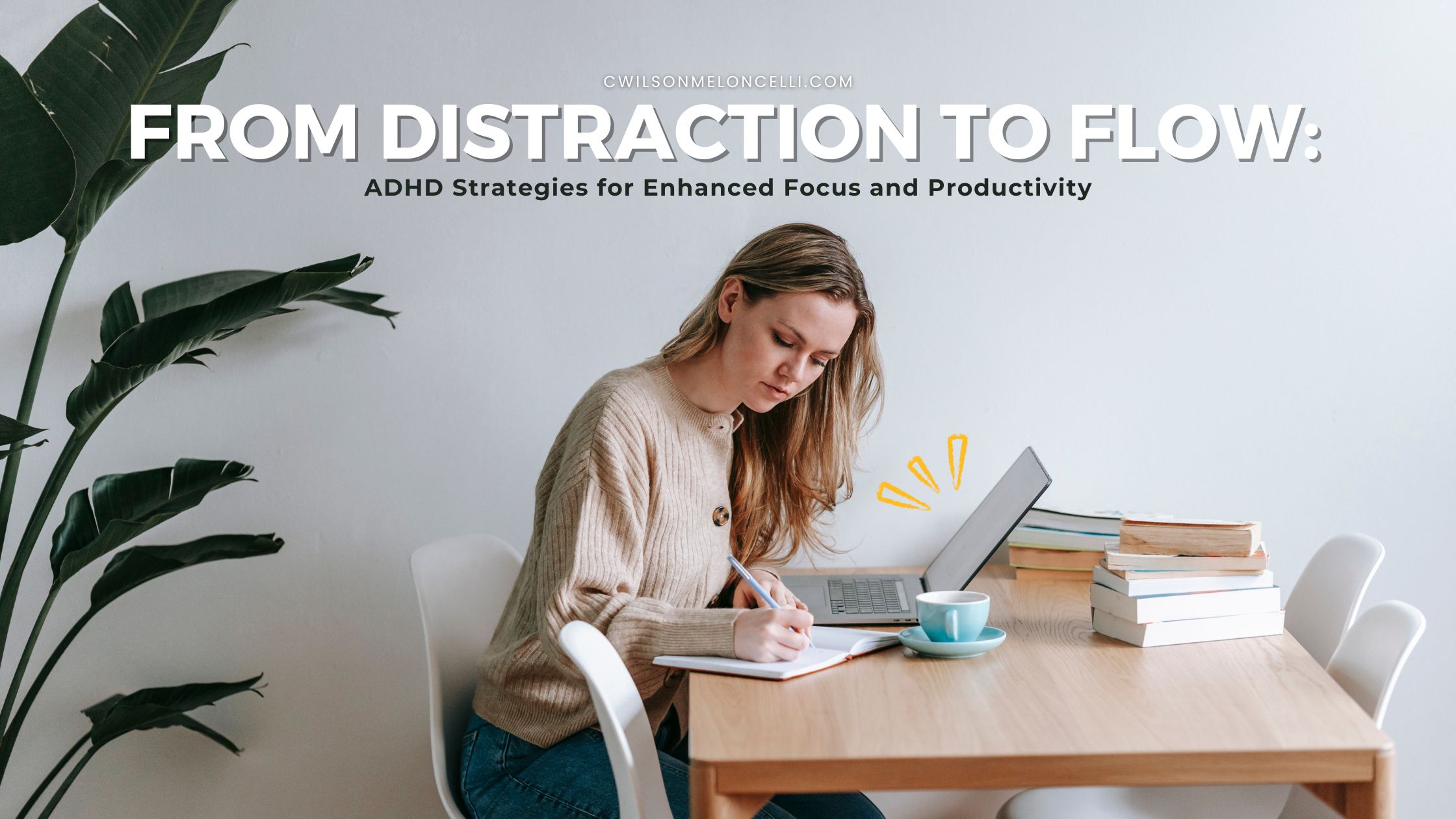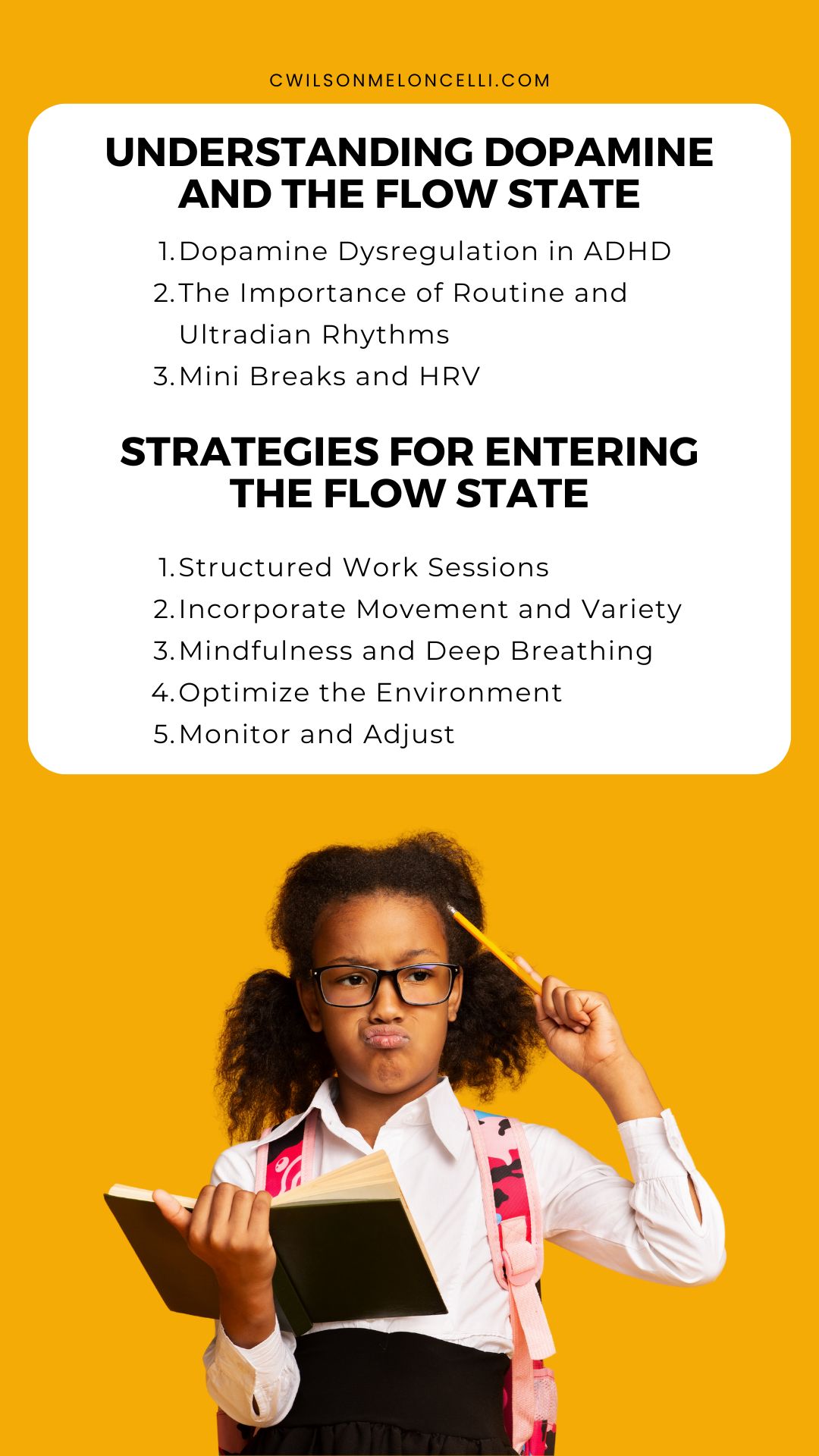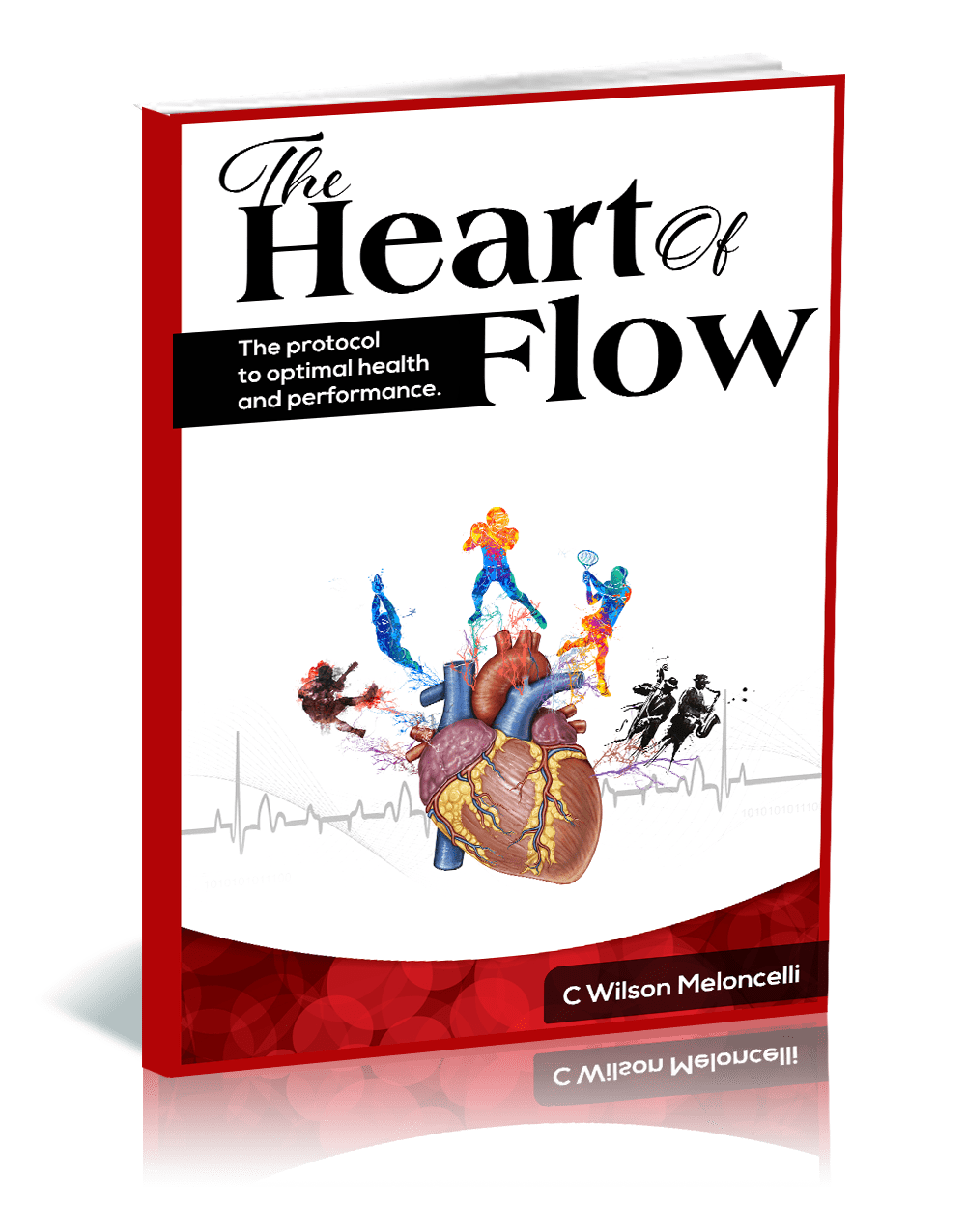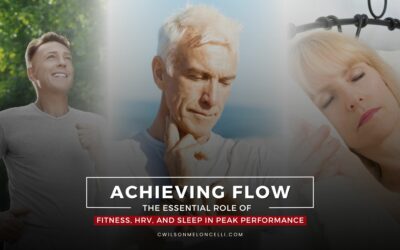
For individuals with Attention Deficit Hyperactivity Disorder (ADHD), achieving a state of deep concentration and effortless productivity, known as the flow state, can feel like an elusive goal. However, by understanding the role of dopamine in facilitating flow, and implementing strategies to regulate dopamine levels through routine and breaks aligned with ultradian rhythms, individuals with ADHD can increase their likelihood of entering the flow state. Additionally, optimizing Heart Rate Variability (HRV) through structured breaks can further enhance flow state access and alleviate ADHD symptoms. This article explores practical techniques for individuals with ADHD to unlock the flow state and enhance their overall well-being.
Understanding Dopamine and the Flow State
Dopamine, a neurotransmitter associated with motivation, reward, and focus, plays a pivotal role in facilitating the flow state. Research suggests that optimal dopamine levels are essential for entering and sustaining flow, as dopamine enhances attention, motivation, and cognitive flexibility.
- Dopamine Dysregulation in ADHD
- Individuals with ADHD often experience dysregulation in dopamine levels due to abnormalities in dopamine transporters and receptor sensitivity. This dysregulation can impair attention, motivation, and impulse control, making it challenging to enter the flow state.
- The Importance of Routine and Ultradian Rhythms
- Establishing a routine aligned with the body's ultradian rhythms, which consist of 90-minute cycles of activity followed by 20-minute rest periods, is crucial for regulating dopamine levels. By structuring activities around these cycles, individuals with ADHD can optimize dopamine replenishment and prevent burnout.
- Mini Breaks and HRV
- Taking short breaks during rest periods is not only essential for replenishing dopamine but also for optimizing Heart Rate Variability (HRV). High HRV is associated with stress resilience and better cognitive function, making it a key predictor for accessing the flow state.
Strategies for Entering the Flow State
- Structured Work Sessions
- Break tasks into manageable chunks and set specific goals for each session. This helps maintain focus and motivation, making it easier to enter a flow state.
- Use timers or productivity apps to track work intervals aligned with the 90-minute activity phases of ultradian rhythms.
- Incorporate Movement and Variety
- Include physical activity or changes in scenery during breaks to stimulate dopamine release and enhance cognitive function.
- Experiment with different tasks and environments to find activities that elicit a sense of engagement and flow.
- Mindfulness and Deep Breathing
- Practice mindfulness techniques such as nasal breathing or meditation to reduce stress and improve attentional control.
- Mindful breaks during rest periods can help reset focus and enhance cognitive flexibility, facilitating flow state access.
- Optimize the Environment
- Create a workspace that minimizes distractions and promotes focus. Use noise-canceling headphones, organize your workspace, and eliminate clutter.
- Personalize your environment with motivational cues or inspirational quotes to enhance motivation and engagement.
- Monitor and Adjust
- Keep track of your energy levels and productivity throughout the day. Adjust your schedule and activities based on your natural energy fluctuations and attention span.
- Reflect on your flow experiences and identify patterns or strategies that contribute to entering the flow state.
Entering the flow state is not always easy, especially for individuals with ADHD. However, by understanding the role of dopamine, establishing routines aligned with ultradian rhythms, and optimizing HRV through structured breaks, individuals with ADHD can enhance their ability to access the flow state and improve overall well-being. By incorporating these strategies into daily life, individuals with ADHD can unlock their full potential and experience greater engagement, productivity, and satisfaction in their activities.

References
- Csikszentmihalyi, M. (1990). Flow: The Psychology of Optimal Experience. Harper & Row.
- Barkley, R. A. (1997). ADHD and the Nature of Self-Control. Guilford Press.
- Van der Heijden, K. B., et al. (2005). Effect of Melatonin on Sleep, Behavior, and Cognition in ADHD and Chronic Sleep-Onset Insomnia. *Journal of the American Academy of Child & Adolescent Psychiatry*, 44(5), 453-461.
- Shaffer, F., & Ginsberg, J. P. (2017). An Overview of Heart Rate Variability Metrics and Norms. *Frontiers in Public Health*, 5, 258.
- Masino, S. A., & Rho, J. M. (2012). Mechanisms of Ketogenic Diet Action. *Epilepsia*, 53(Suppl 8), 52-54.









